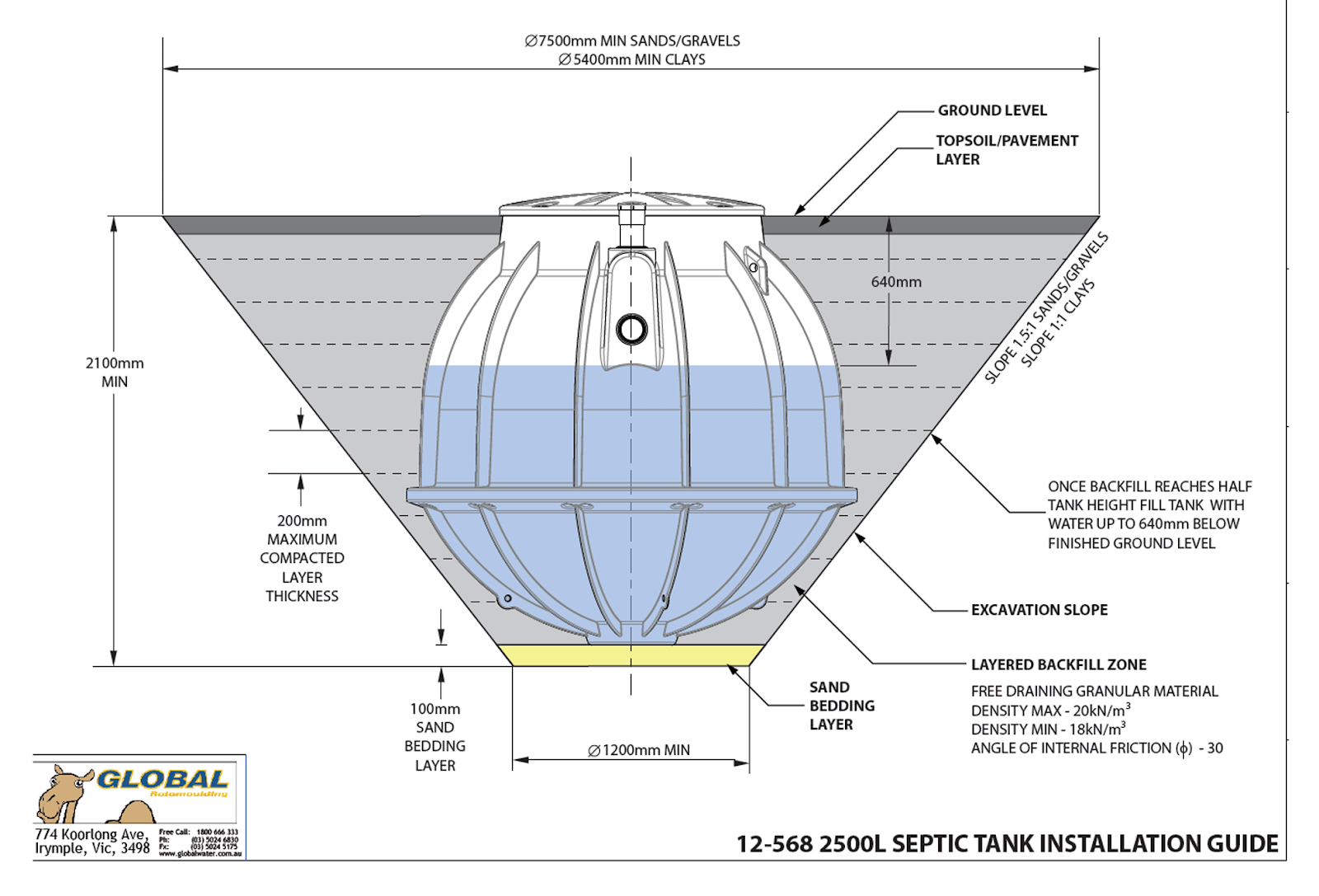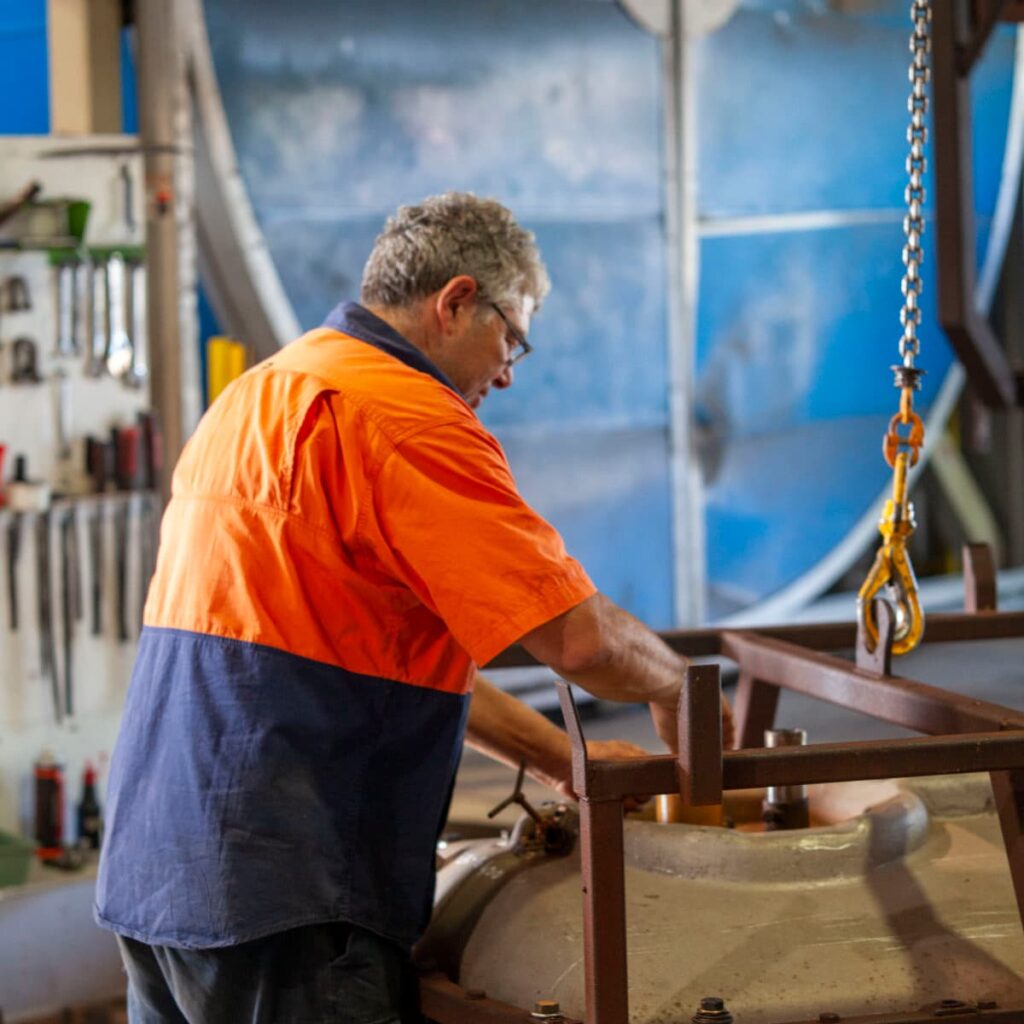Septic Tank Installation Diagram and Its Importance
Home / Septic Tank Installation Diagram and Its Importance
- globaltanks
- December 22, 2022
- 2 minutes
The importance of a septic tank installation diagram
A septic tank installation diagram is a helpful tool for understanding how your septic system works.
Generally, a septic system consists of a tank that holds and filters wastewater from your home or business, an inlet pipe to bring water into the tank, and an outlet pipe to take it out again for discharge. The installation diagram shows how these elements are connected and where they should be placed for maximum efficiency.

Link to installation guide for global product: https://www.globaltanks.com.au/wp-content/uploads/2015/05/F152-Installation-of-3000-L-Septic-System-u.pdf
In Queensland, Australia, the government has specific regulations on septic system installation that must be followed to ensure public health and safety. The diagram will show you exactly where everything needs to go and how it should be connected for proper operation. It is important to note that failure to follow these regulations can result in hefty fines or other penalties.
The diagram will typically also include instructions on how to maintain your system and what maintenance you should perform regularly. This includes checking for cracks or leaks in the tank, inspecting valves and filters, monitoring sludge levels, and more.
Septic tanks are a vital part of maintaining a safe and healthy environment, so it’s essential to understand and follow the instructions provided in the septic tank installation diagram for Queensland, Australia. Doing so can ensure that your system is working correctly and that all wastewater is disposed of safely.
The different parts of a septic tank include the inlet, outlet, baffle.
The inlet is connected to the main sewer line and allows sewage to enter the tank. The outlet is connected from the tank to a drain field, where liquid effluent can be dispersed safely into the soil. A baffle prevents solids from entering the drain field and clogging it up. Lastly, a sludge blanket forms at the bottom of the tank, where heavy solids settle and can be pumped out periodically.
Each septic tank installation diagram must adhere to specific regulations set out by the government. This includes ensuring that the size of the tank is correct for the amount of wastewater it needs to process and locating it at the proper distance away from any water source. Additionally, the tank must have an appropriate access point for maintenance and inspection purposes.
It is important to note that a qualified practitioner must approve all septic tank installation diagrams before installation. They should also follow the guidelines reported in Australian Standard AS/NZS 1547:2012 Septic Tanks and Greywater Systems. This standard outlines the design, construction, installation and maintenance requirements of septic tanks and greywater systems.
Contact your local council or a qualified installer for more information on septic tanks in Queensland, Australia. They can help you understand the regulations and advise on the most suitable system for your property.
Installation of a septic tank should be done by a professional who is licensed and has experience working with septic systems.
The location is the most important thing to consider when installing a septic tank. The area needs to have good drainage, and there must not be any existing utilities or structures nearby that could interfere with the installation.
In Queensland, Australia, installing a septic tank must comply with local regulations. Therefore, obtaining the necessary permits from the local council and checking that your property meets the requirements for safe installation is essential before installing your septic system.
The diagram also outlines the requirements for maintenance and safety, including soil testing and regular inspections.

